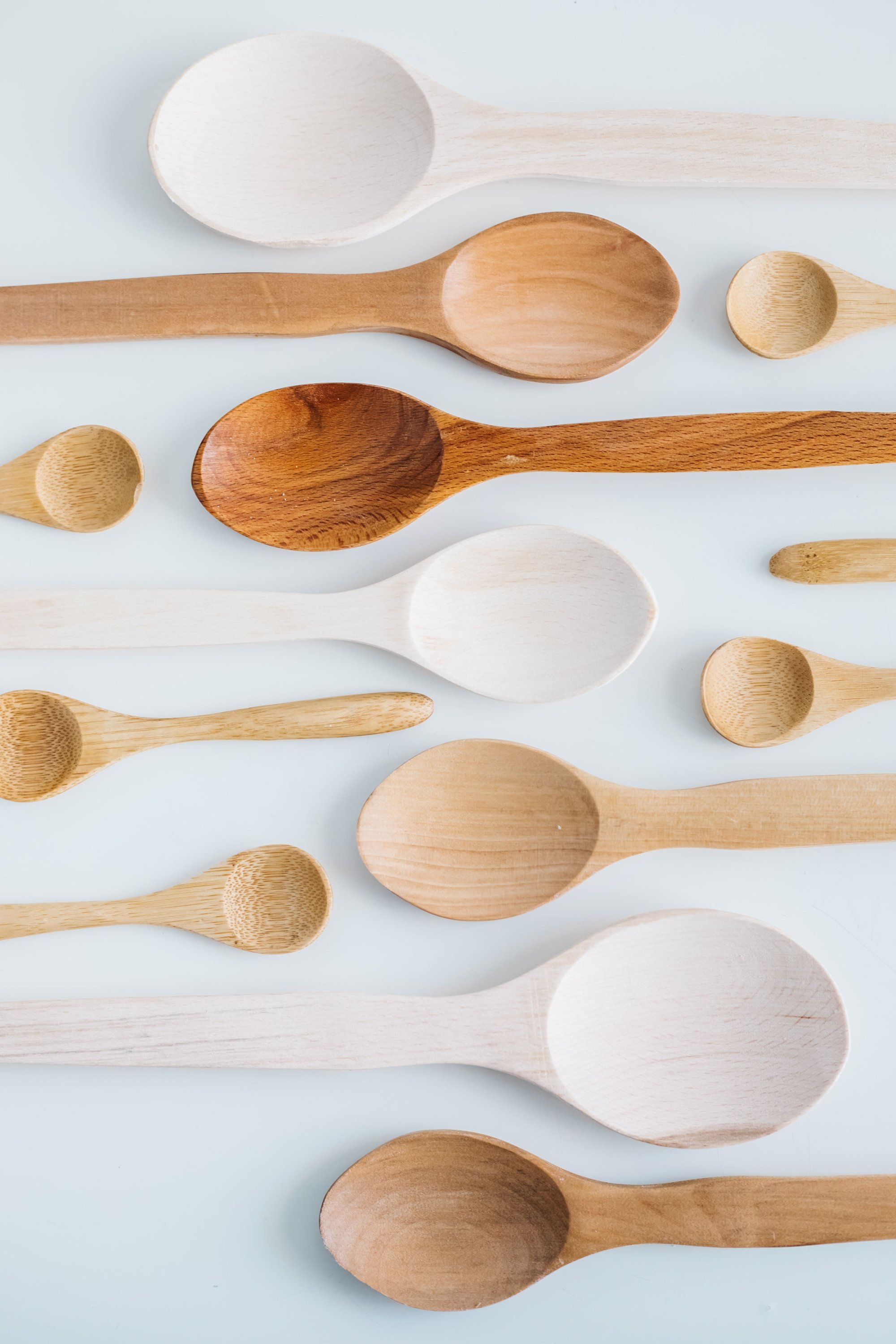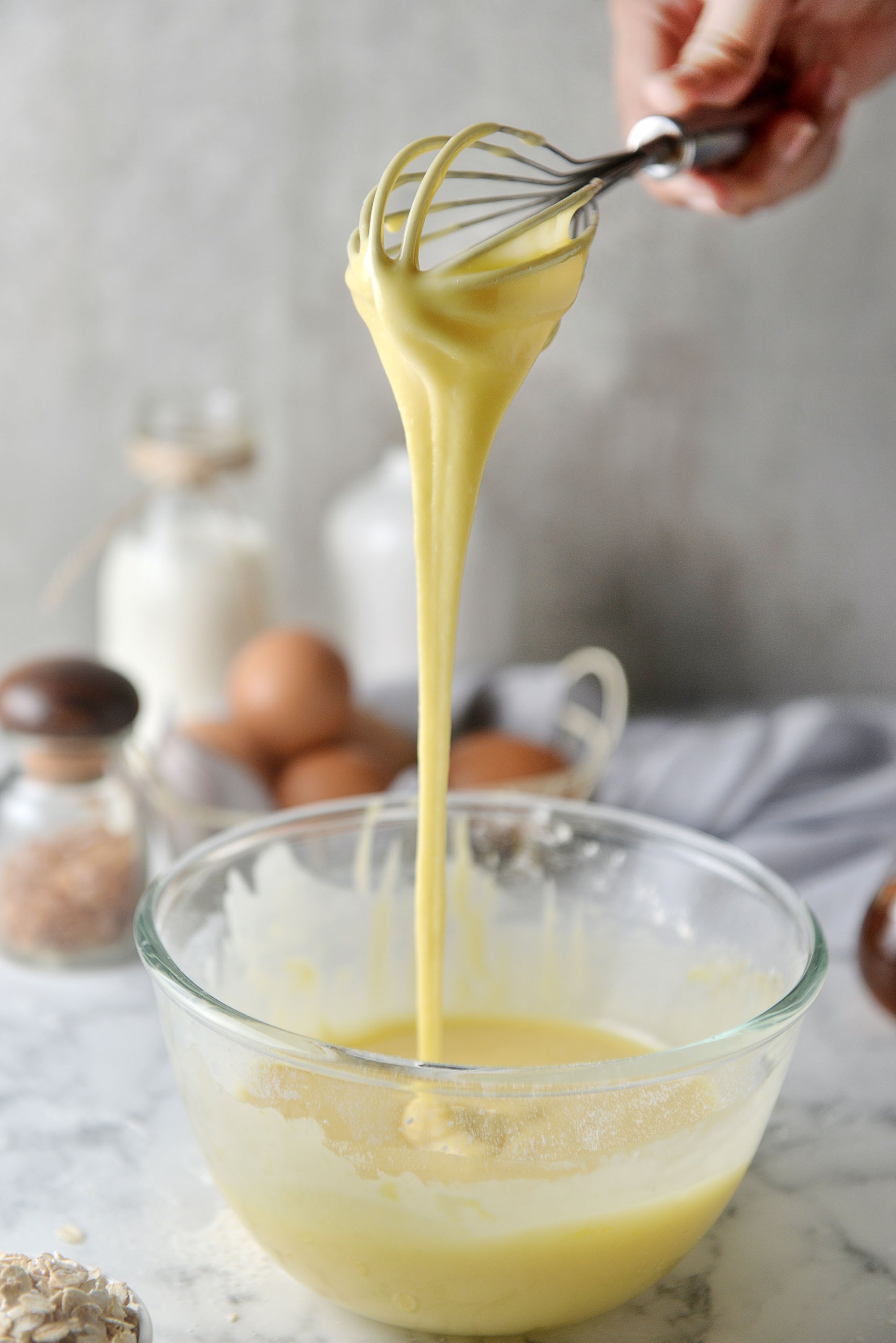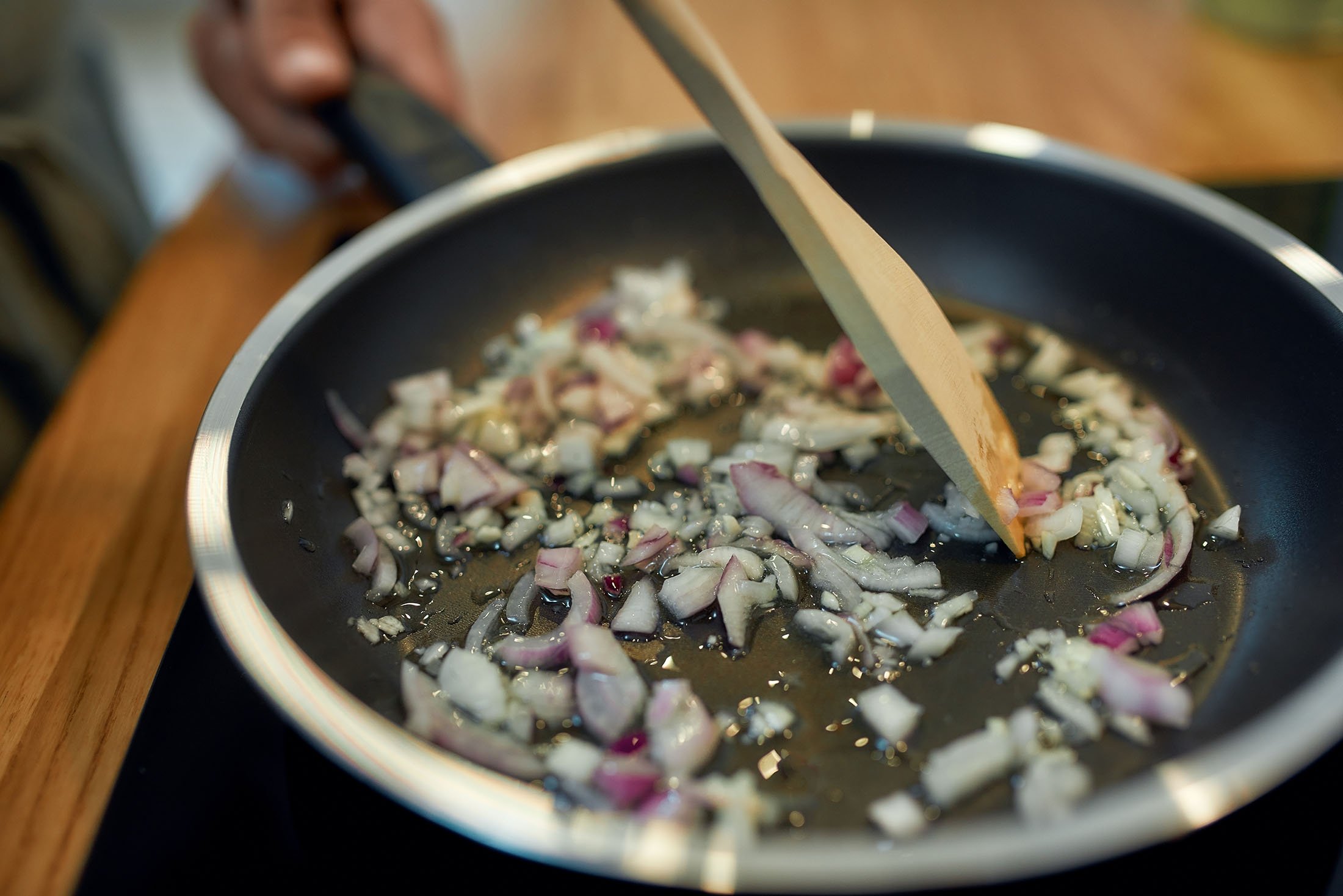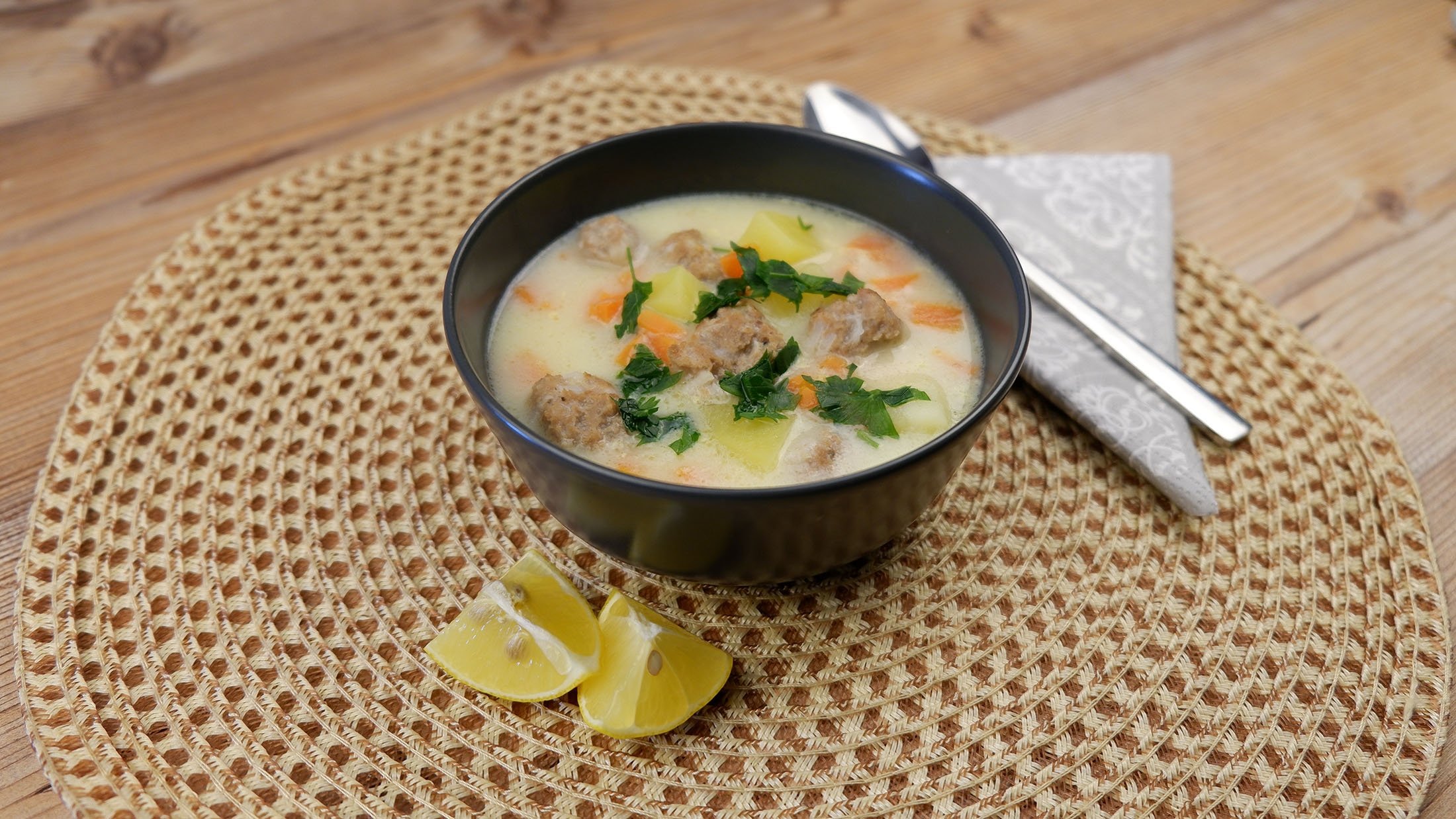What to Cook This Week - The New York Times |
- What to Cook This Week - The New York Times
- Hinesville restaurant Izola’s Country Cooking goes viral on TikTok - WTOC
- Excellent Lunch Recipes For Tired Cooks - Bon Appetit
- Stove becomes stage in Playful People’s interactive cooking class with theater twist - SF Chronicle Datebook
- Explainer: Weird Turkish cooking terms and what they mean | Daily Sabah - Daily Sabah
|
What to Cook This Week - The New York Times Posted: 28 Feb 2021 07:30 AM PST  Good morning. The Golden Globes will be awarded this evening in a ceremony that will not resemble earlier, boozier incarnations of the Hollywood Foreign Press Association's annual recognition of the shows and films its members were lobbied to herald. Amy Poehler will anchor the broadcast from the Beverly Hilton in Los Angeles, with Tina Fey joining her from the Rainbow Room in New York. The nominees will join via screens in their homes. (Stars, they're just like us.) In search of normalcy and silly-season fun, I'll watch with a platter of loaded nachos, potato chips, clam dip and spicy party mix, then maybe bring my laptop into the kitchen later in the show to follow along live with The Times while I cook these ridiculous crispy fried tofu sandwiches in accordance with the teachings of Brooks Headley of Superiority Burger in New York. Hollywood's about escape, and I could use a little of that these days. I'm sure the same is true for you. That's Sunday's eating, at least if I don't avail myself of this amazing collection of 20 surprising, delicious recipes for sheet-pan dinners. (You'll like this, too: our Genevieve Ko on how the unflashy sheet pan became a kitchen star.) On Monday, I think I might turn to pasta with fresh herbs, lemon and peas (above), a kind of promise to myself that spring is coming, that soon enough trees will bud and we'll be able to take long walks before dusk. Yes, fellow subscribers. You need to be a subscriber to enjoy all the benefits of NYT Cooking. Your subscription is what makes NYT Cooking possible. Please, if you haven't already, I hope you will consider subscribing today. We are meanwhile standing by to help, should anything go wrong while you're cooking or using our site and apps. Just write cookingcare@nytimes.com. Someone will get back to you, I promise. Now, it's nothing to do with lobster thermidor or blistered grapes, but the Hold Steady have a new album, "Open Door Policy." There's some epic lyrical speak-singing from Craig Finn on it, "Me & Magdalena." (Different song from the Monkees one with the same title I mentioned a while back.) Nicholas Kulish's excellent story in The Times this week introduced me to the Instagram account Influencers in the Wild. I'd unfollow but I can't. This is a difficult, fascinating story about a big-mountain skier named Dean Cummings, whose mental illness led to his death, by Devon O'Neil in Outside. More music: Boubacar Traoré, "Hona." Let that wash over you as you cook. Finally, I botched the Purim story on Friday and said that Esther was Haman's cousin. Of course she wasn't. She was Mordecai's cousin, and married to the King of Persia. Apologies. I'll be back on Monday. |
|
Hinesville restaurant Izola’s Country Cooking goes viral on TikTok - WTOC Posted: 28 Feb 2021 08:27 PM PST  "The biggest thing for us as what we're going through here on the line, we're giving you a taste without actually tasting everything that we have on the menu so you can see visually before you walk through those doors. 'Oh wow! This is what they're serving today.' Ninety percent of the people, they eat with their eyes so they can see the product beforehand, it draws attention," said Whiters. |
|
Excellent Lunch Recipes For Tired Cooks - Bon Appetit Posted: 28 Feb 2021 07:00 AM PST Every other week, Bon Appétit associate editor Christina Chaey writes about what she's cooking right now. Pro tip: If you sign up for the Healthyish newsletter, you'll get the scoop before everyone else. When I started working on our "What's For Lunch?" feature in the March issue of the magazine, I was in a dark place food-wise. Gone were the days when rolling out and cooking fresh flatbreads seemed like a cute and fun and novel thing to do in the middle of the workday (yes, I know, who was I?!). I had transitioned to the "shoving plain crackers into my mouth sometime between the hours of 11 a.m. and 3 p.m." phase of quar-cooking. Opening anything (a can of tuna, a bag of rice, the fridge) seemed like too much work. But it wasn't just the physical routine of cooking that was exhausting me. It was the sheer fact of having to think about what I was going to shop for and cook, long before I reached for a mixing bowl or turned on the stove. I would buy a head of broccoli, rack my brain for something interesting to do with it, come up with no ideas that appealed, then finally give up and devolve into my cracker spiral again. But working on the recipes, strategies, and tips in this feature inspired something of a cooking renaissance. I've made Hetty McKinnon's Peanut Noodles with Cucumbers multiple times, cleaning out several mostly empty jars of nut butter in my pantry in the process. I've been dreaming of Basically editor Sarah Jampel's Broccoli Melts, which remind me of Stouffer's French bread pizza in an extremely good way. I want to make each and every one of these sandwiches. My roommate, who's even more over the whole cooking thing than I am these days, just made Test Kitchen director Chris Morocco's Soy and Scallion Tofu Bowl and declared it one of the best things she'd made in months. Sometimes all you need to re-spark the desire to cook is someone else's idea, and when you work at a food magazine, there's never a shortage of those. I hope you check out the recipes and tips from the BA folks and contributors who worked on this lunch story, whether in print or online. And I hope their ideas will help restore a little joy to your next meal. Here's What I'm Making for Lunch This Week: |
|
Posted: 28 Feb 2021 09:49 PM PST 
Broadway actor and San Jose native Aaron Albano had his stage set: garlic, onion, distilled white vinegar, soy sauce, chicken legs, spices and a rice cooker. And it was important to have a rice cooker filled with good rice — none of that "cheap garbage rice," he instructed his audience in advance. This interactive cooking class, courtesy of 11-year-old, San Jose-based Playful People Productions, had a theater twist. While Albano taught audiences how to make his mother's Filipino chicken adobo recipe — via Zoom from his New York galley kitchen — he'd share stories about life in Broadway shows, including performing a number from his repertoire. 
Playful People, which produces musicals that let adults and children play together, frequently casting parents alongside their children, got the idea for its "Sunday Family Cook-Alongs" from Gary De Mattei and Caryn Hartglass, who make cooking videos with singing and dancing, calling themselves the Swingin' Gourmets. They taught the first class Playful People offered; Albano taught the second, on Sunday, Feb. 28. The series continues with different hosts through April 25. "Pre-pandemic, when you're at someone's house, you tend to gravitate toward the food, where it's comfortable," says Playful People co-founder Katie D'Arcey in advance of the class. Even over virtual video, "it's still that same sense of, you're in your element, in your kitchen, and you're cooking, and you're just talking and being together with someone." As a bonus, she adds, "you can't really be too uptight when you're cooking." 
As performer, instructor and host, Albano exuded star power, making his camera into his best friend, turning toward and away from it with a pro's timing. But he also exemplified the easygoing vibes the kitchen can bring out. On the endless variations on chicken adobo recipes among Filipinos: "We're all wrong, and we're all right." On soy sauce: "You're feeling like you're using a lot, but I promise you're not." On first learning his mother's methods: "She has no measurements. I was a little pissed, but now I teach exactly the same way." (He describes ideal water height in terms of the length of a finger joint — what he calls a "super-Filipino" move — and a vinegar amount as "a quick pass.") 
Once the rice was on and the main course was simmering, Albano shared memories from performing in "Hamilton" (he was on tour with the show in Toronto when the pandemic hit), "Newsies" and "Cats." A highlight came when he performed his "Newsies" audition piece, "Proud of Your Boy" from "Aladdin." Now he didn't have to communicate feeling to the rear balcony; he could simply inhabit the lyrics, and as an audience member, you could appreciate anew how a musical theater soloist has to be able to say lyrics credibly as monologue if he's to sing them truthfully. Then, in his living room, his dog Bandit sniffing about, the song became as natural as casual conversation. 
A class like this might work best when its audience already knows each other. But even if, like me, you're new to the Playful People community, you might have felt a sense of recovered togetherness again — just a little bit — as different households' pots reached a boil at around the same time or when Albano said it was time to eat. Miles apart, the same tangy, pungent vapors escaped from lids, and an array of faces evinced similar sensory discoveries, pulling up chairs to the same virtual table. Sunday Family Cook-Alongs: Through April 25. $25. 408-878-5362. playfulpeople.org |
|
Explainer: Weird Turkish cooking terms and what they mean | Daily Sabah - Daily Sabah Posted: 28 Feb 2021 04:43 AM PST Turkish cuisine is renowned worldwide and each province has its own unique dishes thanks to centuries of different influences through trade, wars and migration, especially during the Ottoman Empire. If you know a bit of Turkish or you love a good Turkish dish, you'll likely be checking out Turkish recipes online, though mostly you are left disheartened when you find that even Google Translate can't help with some phrases. Granted that not all Turks who are not that involved in the kitchen will know what some of these terms mean, even if they have heard them throughout their lives. Even I, when writing down some recipes each week, have to wrack my brain as to think of ways of how best to explain it. But before we dive into the nitty-gritty, let's start with measurements, which can make or break your dish, especially when it comes to baking. Popular measurements mentioned in Turkish recipes
This is a standard-sized Turkish "water glass" and is used to measure all kinds of things. The liquid volume of these glasses is 200 milliliters and can be compared to a classic U.S. cup of measurement.
The iconic thin-waisted/tulip-shaped Turkish "tea glass" is used in lieu of a water glass to measure a lot of things. While there are now a wide variety of tea glasses, which do lean more on the bigger side nowadays, the ones mentioned in classic Turkish recipes refer to a liquid volume of 100 milliliters.
These are the three different kinds of spoons you can encounter in a Turkish kitchen but if you are from Europe or the U.S. you may fall victim to misunderstandings. A "yemek kaşığı" is a tablespoon and is roughly the same all around the world. A "tatlı kaşığı" is when things start to get confusing. Meaning "dessert spoon," this type of spoon is what the world calls teaspoon. But in Turkey, a "çay kaşığı," aka Turkish teaspoon, is significantly smaller, which considering their tiny tea glasses is a necessity. About four Turkish teaspoons equal a U.S. or European teaspoon in volume.
These three mean essentially all the same: a pinch. But the thing is that "tutam" is used for more substantial things such as chopped-up parsley or alike, usually involving at least three fingers rather than the usual two. Çimdik and fiske are used more for salt and other seasonings. Fiske could even be considered a flick, and smaller in amount than çimdik. The question of flourTurks love their sweet or savory pastries, böreks and layered desserts, so you'll come across a lot of flour in recipes. When tackling some doughy recipes, you might find the following phrases may be confusing.
This phrase means something along the lines of "however much flour it can take." Considering that there are different consistencies of dough, this phrase is nothing short of baffling. If nothing else is mentioned and there are no exact measurements or mention of consistency, it really comes down to what kind of recipe it is. If it is a cake, the dough should be fed enough that it preserves a bit of a runny texture but anything else like bread or doughy creations will have to be kneaded, meaning you should strive for a soft but no longer sticky dough. One such example is revani. I had to measure my flour before writing it down for our Ramadan Bayram dessert recipe series. My guess is that a few years back, the quality of flour would change from brand to brand (not to mention different types as well), so going with a description of consistency was a better gauge than giving exact amounts (speaking from experience).
Usually paired with the phrase above, this means the dough should be "as soft as your ear lobe." The dough you want to achieve here should be on the softer side while not being sticky anymore. A great example of this is the Braided Easter bread. It is a yeast bread/dough but leans more on the softer side.
While not only used in recipes involving doughs, these two words mean "runny," or even kind of slimy, depending on the recipe. On the stoveWhen it comes to cooking and cutting, the Turks have quite a few creative terms they like to use.
This phrase can be used in almost anything that is sauteed and literally means "until the smell comes out." For example, if you want to make the dessert "helva," you need to cook the flour until it browns a bit and gives off that distinct smell. But if you are frying garlic, you will only have to cook it for a bit until it is aromatic and the smell is all over the kitchen – you will not want to burn it!
This phrase literally means "until it turns pink" and is used mostly when describing sauteeing onions or barley noodles. This doesn't mean that you should expect to see pink hues in your cooked onions, so do not worry. This simply means that they should start to turn a slightly different color (translucent in this case) and soften.
This means in a literal sense "until the water/fluid has been absorbed" but refers to the fluids released by meat or vegetables while cooking on a stove. What is really meant is to continue cooking until the liquid, either from the ingredient itself or added in later, has either vaporized or soaked in. Sometimes this is used for rice and bulgur dishes as well.
Speaking of liquids, this literally means "until you can see 'eyes' form." When you don't know what is meant, this can sound quite morbid but it is definitely not. Depending on the recipe you are working on, this usually means bringing it to a boil and let it cook until bubbles (the eyes) form, as is the case with fried eggs. But it can refer to things getting porous as well, depending on the recipe.
Terbiye alone means "manners" in Turkish but here it is a specific type of dressing used in soups and some stew-like vegetable dishes. The Thracian wedding staple "ekşili köfte" soup (sour meatball soup) or a sour celery stew will call for you to make a "terbiye," which is made with an egg yolk and a tablespoon of flour and yogurt. You will want to add a bit of the hot water from your dish into this mixture before adding the whole thing otherwise you will have lumps and chunks of cooked yogurt, not a smooth consistency.
You are likely to come across this while making soups, stews or puddings and means to get it to a boil for a short moment. Usually wanted after the soup has been dressed, the recipe will ask you to get the whole soup to a boil and turn the heat off and wait before serving.
Kill, kill, kill! That's what it literally means but despite the murderous flair it gives to cooking, it only means to sautee something on high heat and make it softer. For example, when you have onions, the Turkish recipe may want you to "kill" it, which can go two ways: it will either call for you to rub fresh onions with salt and then wash under cold water to get rid of the bitterness if to be consumed raw or to be sauteed enough that it softens and loses a bit of its volume.
This is the lighter version of "öldürmek." Basically, it means to cook in water slightly or sautee very lightly, depending on the ingredient used. 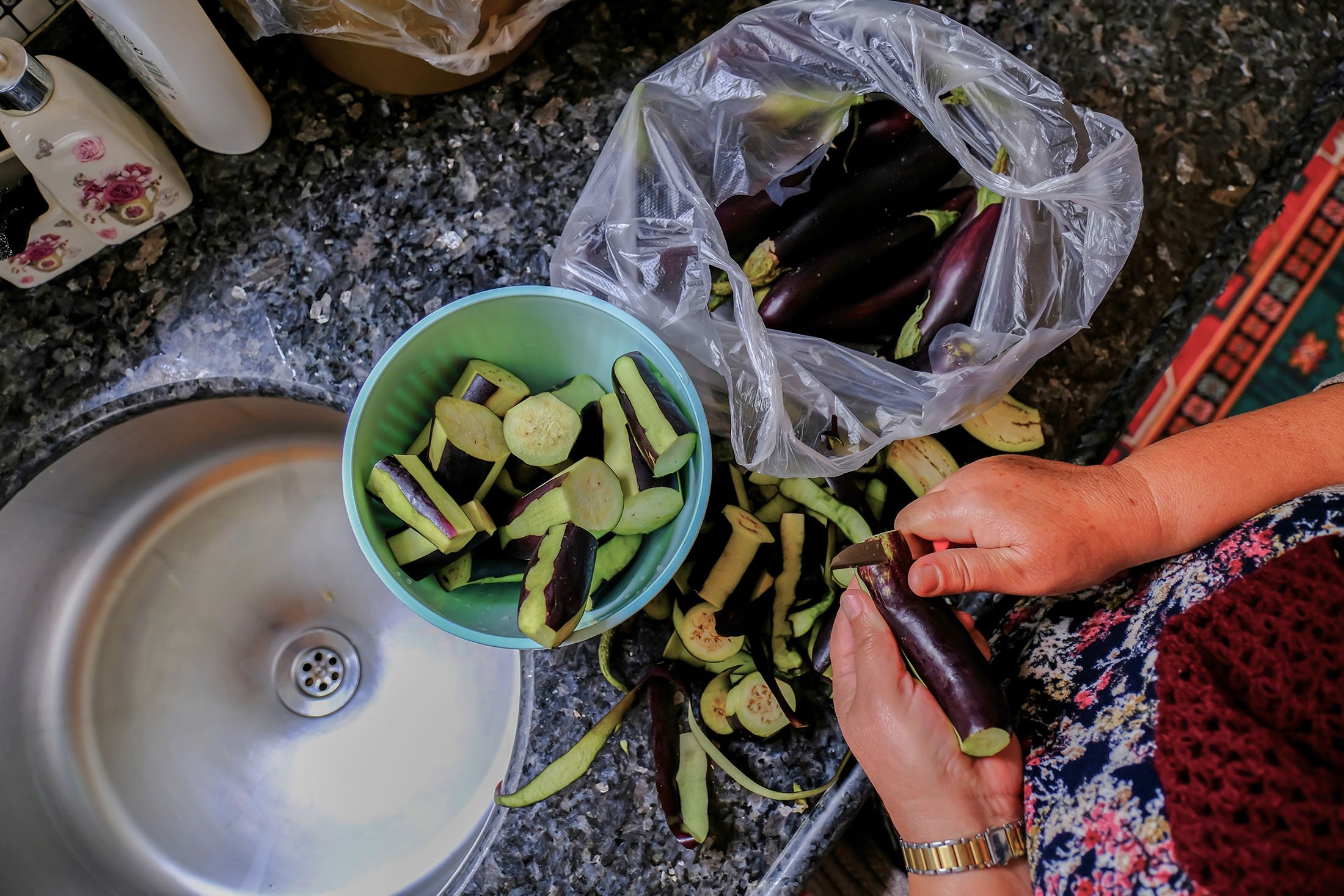
This is my personal nemesis. Whenever there is an eggplant recipe, such as the karnıyarık, I opt for a long explanation such as peeling them lengthwise to create stripes like a zebra's, or some other creative descriptions. Preparing eggplants this way is the traditional route to go and this manner of peeling is ingrained in the Turkish language as such. Of course, other oblong vegetables can be peeled in this manner but usually, it is an eggplant. If you live in or have ever visited Turkey, you will have seen meat sold cut in different shapes and one of them is "kuşbaşı," literally meaning "bird's head," which sounds rather unappetizing. While no bird heads are involved (in the case with red meat anyway), this is a term that means that the meat is cut in cubes about the size of 1.5-2 centimeters (just under an inch). Literally meaning "decision of the eye," this is a tricky measurement for those who are not too familiar with cooking. You will have to let your gut decide, or rather measure with your eyes, however much you need. It is the favorite unit of measurement for Turkish grandmothers. If you are lucky the recipe will also describe a certain consistency you'll need to achieve, which will be your main clue. While Turks have verbs like "dökmek" for pouring and "karıştırmak" for mixing, this term here would be to tip or more precisely, souse. You will need to soak or drench the ingredients in question or just pour them on top whenever a recipe calls for this. |
| You are subscribed to email updates from "cooking" - Google News. To stop receiving these emails, you may unsubscribe now. |
Email delivery powered by Google |
| Google, 1600 Amphitheatre Parkway, Mountain View, CA 94043, United States | |
from What to Cook https://ift.tt/3b2hxmP


